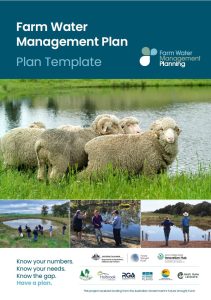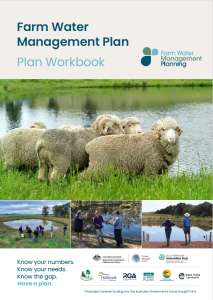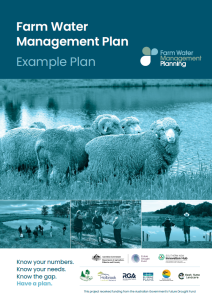On-Farm Water Management Planning
The On-Farm Water Management Planning Project is funded by the Australian Government’s Future Drought Fund, supported by the Southern NSW Drought Resilience, Adoption and Innovation Hub and is being rolled out by a brilliant network of Farming System and Landcare organisations across the Southern NSW footprint.
Through this project we have helped farmers and land managers prepare for drought and tough dry times by running workshops and events to build the awareness and skills to manage these situations with confidence.
Through our workshops, field days and other events, the On-Farm Water Management Planning Project has enabled farmers to know what water they have, know their water needs, know the gap, and have a plan enabling better water security, better water quality and opportunity to optimise their systems.
Improving farm dams: a farmer's perspective
This video follow’s local farmer, Marcus Richardson’s journey to improving farm dams on his property at Table Top, NSW.
Marcus shares his experience in fencing off farm dams to increase water quality and biodiversity while incorporating reticulation and troughing to enable better management of issues such as bloat.
Farm Water Audit - 'How to' Webinars
Farm Water Audit Lunch Litre 1:
Quantifying Farm Water Requirements
Farm Water Audit Lunch Litre 2:
Estimating Tank and Dam Storage Capacity
Farm Water Audit Lunch Litre 3:
Calculating Losses and How Long Water Will Last
Farm Water Management Planning Resources
FWMP Template
This blank version of the Farm Water Management Plan can be used by producers wanting to complete the plan with their own data.
A version of the template can be downloaded here: FWMP-Plan-Template.pdf
FWMP Plan Workbook (East)
The workbook version of the Farm Water Management Plan has some pre-filled data to assist producers in completing the plan.
A version of the Workbook can be downloaded here: FWMP-Plan-Workbook-East.pdf
FWMP Example Plan (East)
This pre-filled workbook provides detailed calculations and examples with pre-filled data. Producers can follow the calculations to understand how the workplan operates.
A version of the Example Plan can be downloaded here: FWMP-Example-Plan-East.pdf
How do you estimate the capacity of your dam without bringing the tinny out?
When it comes to measuring up your water storage capacity it is crucial for that estimation to be as accurate as it can be, so you don’t get caught short when the tap turns off. If you’re lucky you might know how deep the dam was when it was built – from a scribble in an old notebook, but how can we check it now without pushing the tinny down the bank?
While the surface area of water in the dam can be figure out with a quick walk with a tape measure, our depth is subject to constant change. We lose dam depth from the top through livestock consumption and evaporation, but we also lose it from the bottom up through silting and sedimentation as well.
In light of our upcoming Farm Water Management Planning workshops, we wanted to let you in on a cheap and easy way of measuring the depth of your farm dams. This video (5:11mins) demonstrates Greg Bekker, from Agriculture Victoria, making up and using the homemade DAMDEEP measuring tool to measure the depth of your dam from the ease and comfort of the bank.
What you will need to make a DAMDEEP measuring tool:
- 10-20lbs mono fishing line
- Lumo beads
- Sinker with Swivel
- Float
- Scissors.
How to make the DAMDEEP measuring tool:
- Thread fishing line through a small lumo bead, then a larger lumo bead, the float, a small bead and finally through the sinker swivel, using a suitable knot to secure the line to the sinker.
- Using a small, spare length of line, thread it through the top of the first bead, come back over the bead and re-thread through the top of the bead again. This ensures that the bead can be pushed by the float up the line – measuring the depth of the dam, and will then also stay at that point when the float goes down. You may need to use a couple lengths of lines/wrap multiple times to achieve the desired tightness around the bead.

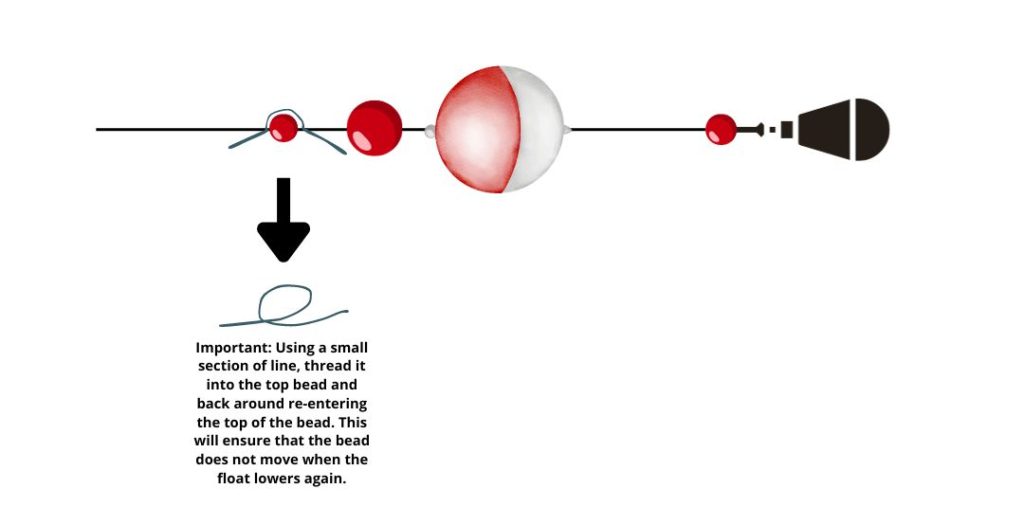
Find a Delivery Partner Near You
This Project is led by Murray Local Land Services and delivered by a number of local Farming System and Landcare organisations across Southern NSW.
Holbrook Landcare Network – Holbrook
West Hume Landcare – Burrumbuttock
Corowa District Landcare – Corowa
Riverine Plains – Mulwala/Yarrawonga
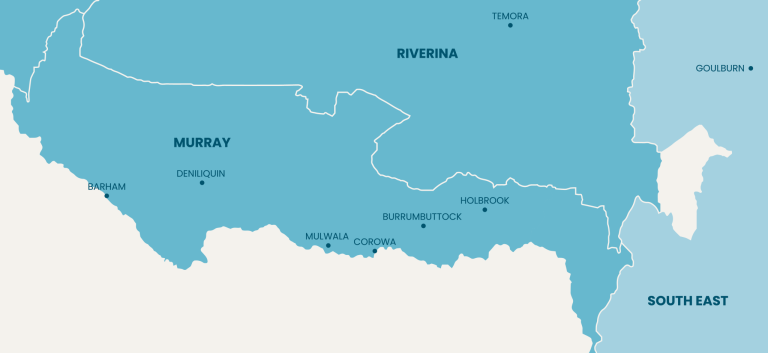
Online Resources


